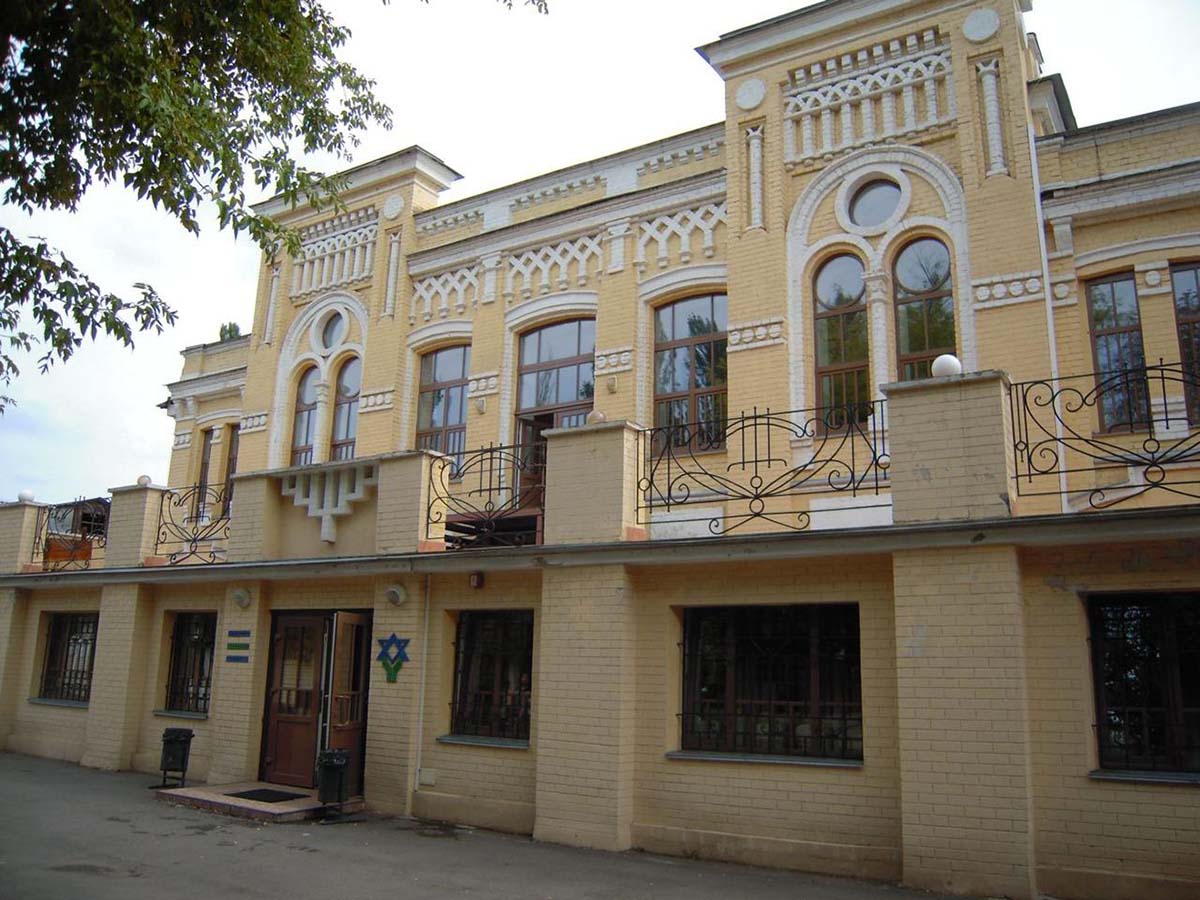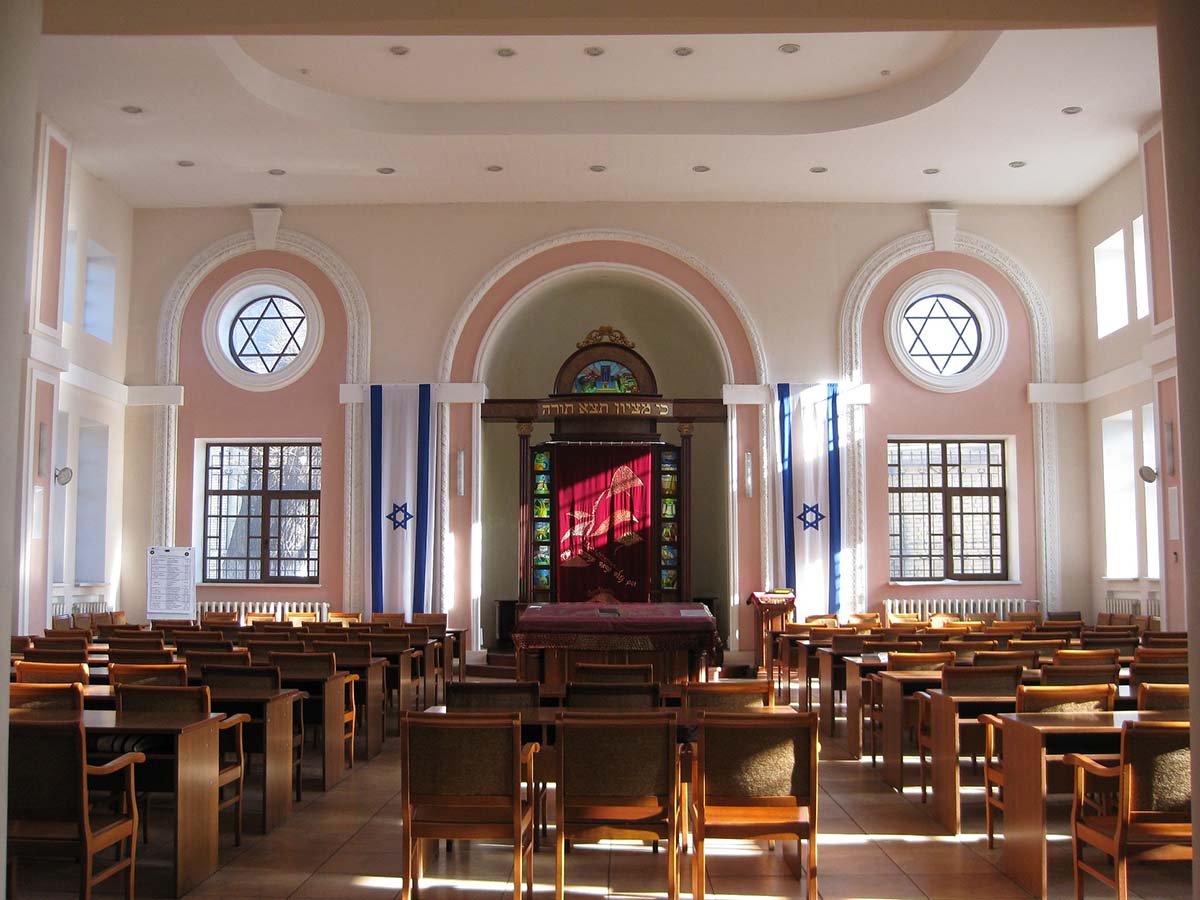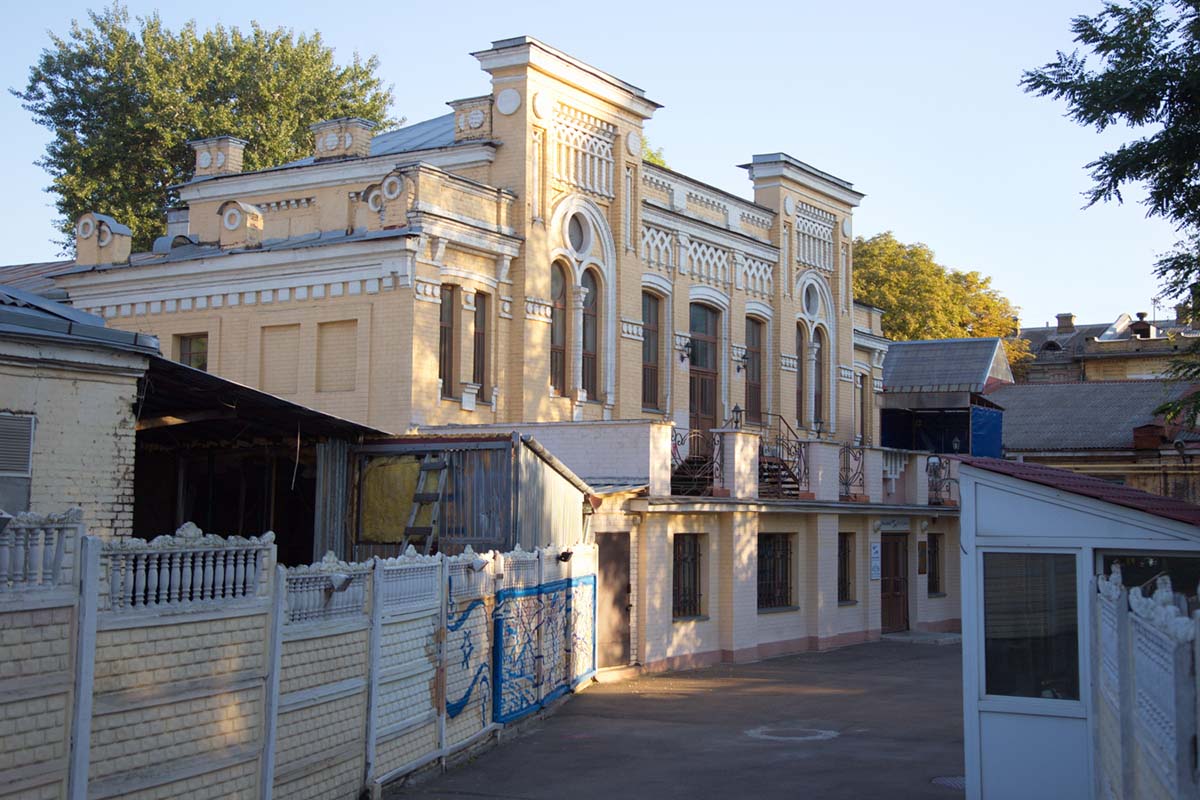At the beginning of the 20th century, on the site of the so-called Arrestantsky gardens, several small streets were planned and laid, among them was Skomoroshsky Lane (the Skomorokh River flowed nearby). Estate No. 7 in Skomoroshsky Lane was rented by the Jewish community, which was called the Galician Society after the name of the neighboring square (now Victory Square). In April 1909, its economic management turned to the city authorities with a request: “to allow us to build a building for a prayer house on the land that we rent from the Kyiv city administration on the former Arrestantsky vegetable gardens.” Civil engineer Fedor Oltarzhevsky was invited as an architect.
Permission for construction was given and during 1909-1910 the construction of the brick building of the synagogue was carried out. The work was carried out by the famous Kiev contractor Yakov Faybishenko, who headed the economic board of the Galician Jewish Society. The house was two-story, with a spacious prayer hall and a gallery for women. Its façade is decorated with elements of the Romanesque style. In December 1910, the provincial government recognized the new house of prayer as “suitable for public use.” The Galician synagogue belonged to the Jewish community until 1919, when a decree of the Soviet government announced the nationalization of the property of religious institutions. The synagogue building was provided for the use of local Jewry for some time. In 1921, the Jewish community “Prayer House at the Jewish Bazaar” was registered; it soon chose a different name for itself: the Beis Yaakov synagogue. The community numbered about 750 believers.
In 1929, the Main Electrical Workshops (GEM) of the South-Western Railway demanded that the synagogue building be transferred to them. The entire community opposed it, but the GEM workers insisted that supposedly “this premises is necessary to expand the workshops.” The local administration referred to 2 general meetings of the workshop team (May 1 and December 12, 1929), where 655 and 320 people were present, respectively. Although they managed to obtain only 78 signatures for the closure of the synagogue, Soviet officials did not even pay attention to this. They simply summed up the number of people present at both meetings and stated that 975 people supported the transfer of the synagogue building to the workshops. On this basis, materials on the closure of the synagogue were transferred to the All-Ukrainian Central Executive Committee, which on September 14, 1930 decided to close the synagogue. The leaders of GEM, who until recently assured the authorities of the urgent need for new production premises, turned the selected house into… a dining room. In the early 1930s, the Transsignal plant was created on the basis of the workshops. Its territory, surrounded by a capital wall, absorbed Skomoroshsky Lane. New large production buildings were erected for the enterprise. A nondescript one-story vestibule was added to the front of the synagogue, which was used as a dining hall until the late 1990s.
Only in 2001 was the building returned to believers, and Jewish services resumed here. In 2002-2004, the building was restored and the prayer hall was re-equipped. A special entrance from Zhilyanskaya Street for visiting the synagogue has been built within the plant’s fence. Currently, the synagogue building houses a young community belonging to the national-religious movement in Judaism. The synagogue building houses the main office of the international educational network Midrasha Zionit, which implements numerous projects in the CIS.
Where is the Galician Synagogue?
Zhilyanskaya street, 97


